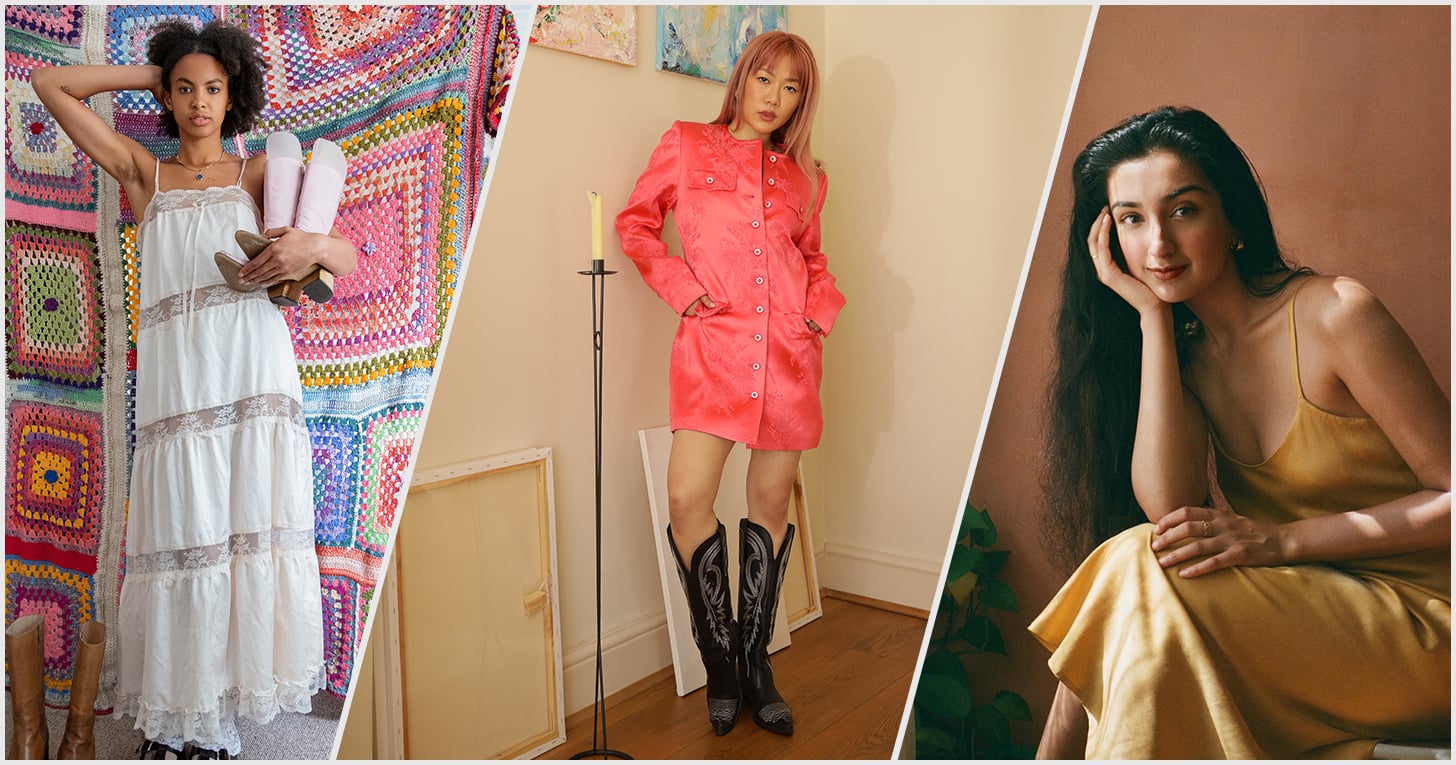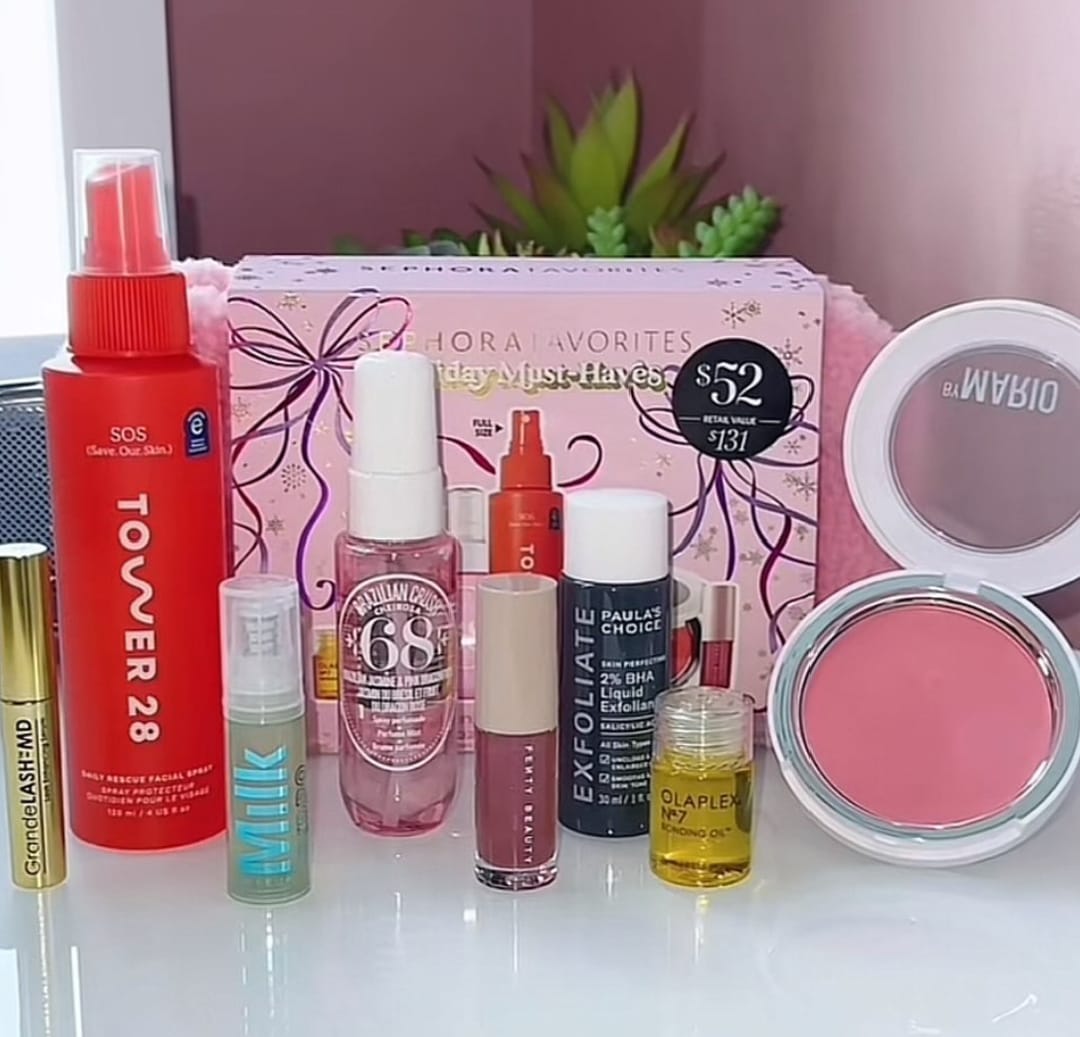
Rosie Okotcha, Andrea Cheong, and Aditi Mayer. Picture Sources: Laura Notlo; Alise Jane; courtesy of Aditi Mayer.
It is doubtless that buzzwords like “overconsumption” and “de-influencing” are popping up in your TikTok FYP. However even because the sustainable-fashion motion continues to develop, it nonetheless typically leaves behind sure demographics. Usually, white persons are the face of the slow- and sustainable-fashion trade, however they’ll miss the mark on the subject of criticizing an trade that has disproportionately affected communities of shade.
By constructing neighborhood with one another to name out the racist, classist, and sexist practices throughout the sustainable-fashion trade, BIPOC influencers have offered their audiences with their very own concepts for decreasing their carbon footprint and resisting quick trend. For these content material creators, their work ranges from exploring the intersections of race and sustainability to bringing better consciousness to employee exploitation and honest wages.
With this in thoughts, POPSUGAR requested six BIPOC content material creators about how the sustainable-fashion trade may also help communities of shade, their greatest thrifting suggestions, and extra. Hold studying to listen to straight from them.
Pumulo Ok. Nguyen (she/her) is a micro-influencer who has created a web based neighborhood along with her slow-fashion ‘match checks and weekly Mug Dance Mondays.
Emma Slade Edmondson (she/her) leads her personal advertising and marketing company to assist organizations enhance their environmental affect. She can also be an writer and a podcast host and considers herself a “slow-fashion OG.”
Rosie Okotcha (she/her) is an assistant stylist with a ardour for combating waste colonialism and quick trend.
Aditi Mayer (she/they) is a trend blogger who explores the intersection of favor, sustainability, and social justice.
Andrea Cheong (she/her) is the founding father of the Conscious Monday Technique and writer of the forthcoming novel “Why Do not I Have Something to Put on?”
Izzy Manuel (she/her) is an skilled on moral “dopamine dressing” and taking funky pictures in her colourful wardrobe.
Q: What’s your greatest hack to discovering reasonably priced thrifted garments and equipment?
Rosie Okotcha: Going to small cities and villages within the countryside, as a result of issues are at all times a lot cheaper than they’re in huge cities. Nonetheless, you do positively run the danger of issues being rather less trendy and extra skewed in the direction of nation life. As a part of that, although, I might additionally say use your creativeness, and do not get led by stylish stuff that’s often dearer. Attempt to purchase issues that match your private fashion, or experiment with upcycling when you discover materials you like!
Izzy Manuel: My greatest hack could be to take your time and be particular. It may be really easy to only purchase one thing as a result of it’s virtually what you’re in search of, whereas when you take your time, you usually tend to discover the factor you’re actually in search of. It is also so necessary to be particular when looking, whether or not that be on-line or in individual. The extra particular you’re on-line, the better it’s to search out one thing when procuring in individual. If you already know what you’re in search of, it makes the search a lot faster, as your eyes beeline towards the best factor.
Emma Slade Edmonson: I at all times used to advise my fashion purchasers once I was a private stylist to take one thing with you out of your wardrobe that you simply would possibly wish to pair with a brand new piece. That is the simplest strategy to preserve you in what I might name your private fashion room.
“Individuals wish to put ‘sustainable trend’ in a field and could be fairly unkind to those who do not appear like they slot in.”
Aditi Mayer: Having grown up thrifting, I might say the extra curated classic and thrift shops are a bit pricier given the time spent to prepare a selected choice. I personally love going to thrift shops in suburban neighborhoods and spending time going by way of the racks to determine a couple of classic gems. We have seen a pointy decline within the high quality of clothes in the previous couple of a long time on account of quick trend, so we actually see that classic gadgets have stood the check of time on this approach. Look out for clothes swaps in your neighborhood (or higher but, set up one with your pals and bigger neighborhood)!
Pumulo Ok. Nguyen: My favourite technique for locating thrifted gadgets I really like goes to thrift shops and simply spending a while actually trying. There are occasions when you may stroll into a spot and instantly discover a terrific merchandise, however typically, it’s important to put within the time.
Andrea Cheong: What “reasonably priced” means is totally different for everybody. If we are able to take that phrase to imply good worth for cash, then I might say look on-line for manufacturers that are not tremendous hyped in the mean time. Traditional names which have a popularity for high quality. Even secondhand, you are paying a premium if that label is having a second. I might go for this together with a pure materials composition.
Q: In the case of sustainable trend, what is the greatest problem you have confronted, and the way have you ever overcome it?
RO: I simply get so bored of my garments, and trend is my approach of getting inventive and expressing myself. I suppose it is like utilizing the identical paints and canvas time and again — it turns into slightly uninteresting. I get round this by swapping garments with pals and upcycling and storing summer time/winter stuff individually, so every season, my clothes feels contemporary and thrilling!
“It’s so necessary to query ourselves once we’re about to devour.”
IM: In the case of sustainable trend, there has positively been overconsumption. As a society, we’re all so used to purchasing so many garments, weekly, month-to-month, and even every day. It may be arduous to interrupt that behavior. For me, the very best factor I ask myself is, “Am I really going to put on that, or am I shopping for it as a result of it is a deal, it is distinctive, it is enjoyable?” It’s so necessary to query ourselves once we’re about to devour, as a result of most of the time, the reply to the questions is a sure relatively than a no.
ESE: It comes all the way down to the disconnect between mainstream trend and the dream it sells versus the truth of its affect, significantly for Black and Brown folks and Indigenous peoples internationally. The vast majority of the folks making our garments are Black and Brown girls within the world South. The style trade does not platform or hero these girls, and most of the time, they’re going through poor working situations and insufficient compensation. Whilst an (extraordinarily privileged) Black lady myself, I’ve not at all times discovered working on this trade and sector straightforward.
I would not say that it is one thing I’ve overcome — it is an ongoing problem to search out methods to boost consciousness for, to honor, and acknowledge and make change for the folks making our garments in a approach that is really significant. We nonetheless have an extended strategy to go to rework the style house to make it equitable and moral for all.
With reference to me and private challenges being a girl of shade on this house, I’ve discovered and tried to construct a neighborhood of like-minded girls of shade. All of us help one another and share info, assets, and alternatives with a purpose to push ahead and be heard as a collective.
AM: The most important problem is the fallacy that we have to purchase our approach into a brand new actuality. Sure, acutely aware consumerism is necessary, however crucial parts of the sustainable-fashion motion embody consuming much less, repairing the issues we personal to problem disposability tradition, and naturally, systemic overhauls, which we are able to do by supporting working actions, supporting coverage work for a extra honest trend trade, such because the Garment Employee Safety Act in LA and the FASHION Act in New York.
PKN: The most important problem I’ve confronted on the subject of sustainable trend is that it is not accessible profit-wise for everybody. Whereas I perceive how sustainable gadgets are priced (supplies, price of manufacturing, honest residing wage), I discover that not lots of people can spend $100-$200 on an merchandise. Once I see a model I really like however cannot afford, I search for gadgets secondhand, often on reseller websites. I additionally anticipate a sale from the model to purchase a chunk I had my eye on.
AC: Individuals wish to put “sustainable trend” in a field and could be fairly unkind to those who do not appear like they slot in. How can we do issues in another way if we echo the mainstream trend trade that is all about who’s in and who’s out?
Q: What has it been wish to create a model for your self as a sustainable influencer?
RO: Largely, I simply love sharing my sustainable outfits, serving to others chew again at quick trend, and connecting with others who’re engaged with combating the local weather disaster. Social media could be such a terrific device in making you are feeling linked, and the sustainable-fashion neighborhood is such a beautiful one to be a part of.
IM: In the case of making a model, as an influencer, you’re the model and the enterprise. I might positively say the ethos of the model I’ve created is centered round authenticity, shame-free training, dopamine dressing, and local weather positivity.
ESE: I’m a marketer by commerce initially, and I’ve constructed my profession in sustainability by way of creating and producing well-known campaigns that promote sustainable and sluggish trend, which inspires extra dialog round sustainable futures and progressive methods of having fun with trend.
“It begins by recognizing that the trade itself is kind of actually constructed on the backs of communities and other people.”
AM: I am actually grateful for the web neighborhood that helps my work. It has been virtually a decade within the making, however I might describe my private model as one which focuses on private fashion punctuated by my South Asian identification and its craft, activism specializing in employee actions, and thought management on parts of our tradition that tie again to trend, comparable to overconsumption and de-influencing.
PKN: I am actually undecided about my model. I’ve so many pursuits as a creator that typically I really feel I could overwhelm an viewers. I might say folks might even see my model as a sustainable life-style, colourful thrifted garments, and residential decor. My Mug Dance Mondays movies have additionally turn into part of how folks discover my content material.
AC: I do not actually see myself as having a model, however I perceive if folks do. For me, it is extra about serving to folks heal their reliance on procuring. It is a psychological well being focus that has sustainable advantages to your wardrobe.
Q: How do you suppose the style trade — particularly the sustainable-fashion trade — can help communities of shade?
RO: I suppose a part of the sustainable-fashion motion’s objective as a complete is to present a voice to garment employees and those that are affected by issues like waste colonialism. Sadly, most of those that undergo the consequences of quick trend and local weather change are folks of shade. So I really feel that the house I work inside goals to deliver consciousness to those points and supply alternate options to the local weather and humanitarian disaster that’s quick trend. Nonetheless, as an precise motion separate from the work it goals to do, I really feel that it’s simply changing into a various house and is a primarily white one with some uplifting to do for the folks of shade who’re energetic inside it.
IM: I feel crucial factor is genuine variety and honest pay, in addition to speaking about who made the garments we personal. Out of the 74 million textile employees, 80 p.c of them are girls of shade, and a few analysis estimates that solely two p.c of them are paid residing wages. There must be a lot extra dialog round this to make the style trade extra sustainable.
ESE: It begins by recognizing that the trade itself is kind of actually constructed on the backs of communities and other people, extra particularly girls of shade. We must always strategy every thing we do with this on the forefront of our minds. If there’s an initiative, a panel, an occasion and ladies of shade will not be being represented inside these areas, we have to ask ourselves why? The trade wants to have a look at the place it’s extracting the vast majority of its assets and supplies from and the place it’s dumping its waste, as a result of typically, these practices are harming communities of shade.
“It was actually different girls of shade that provided me alternatives and visibility.”
AM: If sustainable trend exists to problem the way in which the style trade has operated, then it should transcend simply the issues of human labor and the surroundings and interrogate who has been capable of train true company. It is a dialog tied to class, gender, and race. A big a part of my private platform is spotlighting the work of BIPOC manufacturers and designers and addressing the necessity to create options that perceive the context of regional points and may current aesthetics that honor cultural craft relatively than applicable it.
PKN: I feel the style trade as a complete wants to start out who’s making their garments and the way a lot these persons are being paid. On common, manufacturers outsource their labor to what we’d think about underdeveloped nations, primarily in Asia and Africa. Loads of the time, girls of shade in these nations are working and being paid approach beneath a residing wage. So far as supporting communities of shade, I feel the style trade might start to see the expertise now we have. Alternatives might not at all times be accessible to everybody, and the trade wants to comprehend that expertise and innovation is considerable in these communities when given an opportunity.
AC: If I replicate on my profession, it was actually different girls of shade that provided me alternatives and visibility. So I might say it is about visibility — by way of recognizing, respecting, and even elevating the truth that sustainable trend appears totally different to everybody and that there are cultural nuances current.





